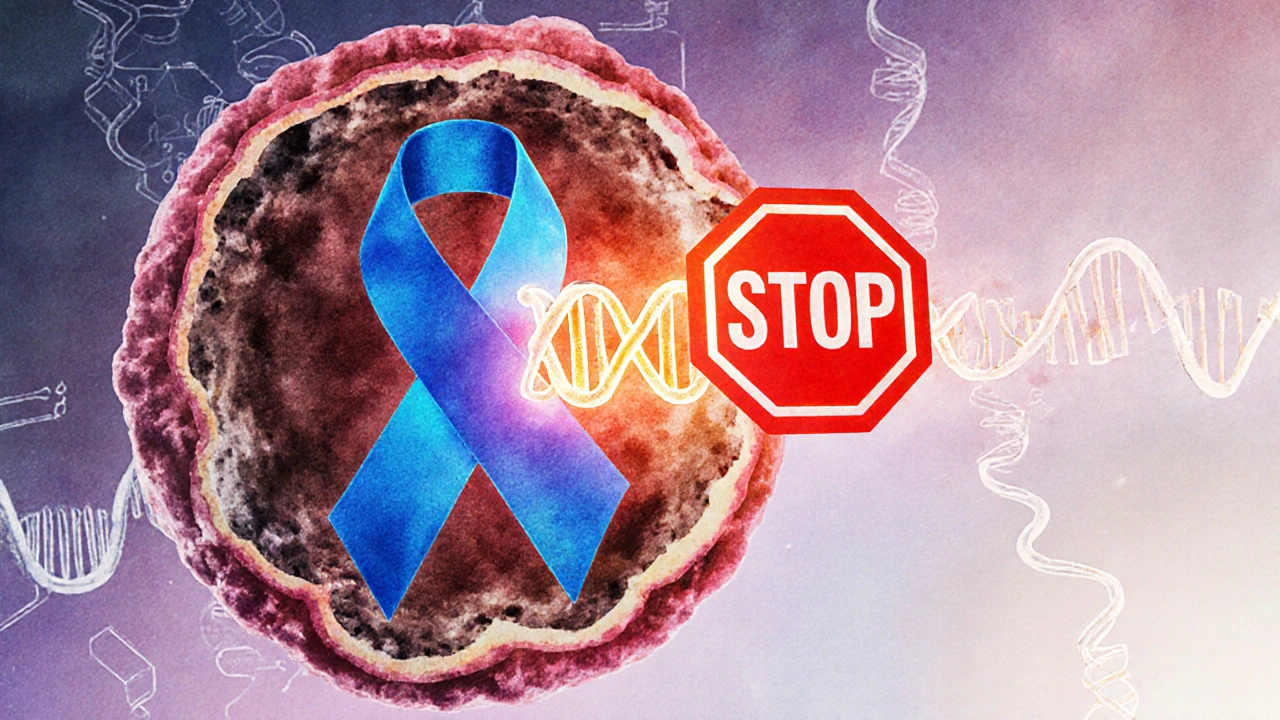HIV/HBV Treatment Comparison Tool
Compare Epivir (Lamivudine) with other antiretrovirals based on your specific treatment needs. Select criteria and drugs to see how they compare for your situation.
Comparison Results
| Drug | Efficacy | Resistance | Side Effects | Cost | HBV Activity |
|---|
Select your criteria to see which drug is most suitable for your specific situation.
Choosing the right pill for HIV or chronic hepatitis B can feel like a juggling act. You want something that keeps the virus in check, stays gentle on the body, and doesn’t break the bank. Lamivudine (brand name Epivir) has been a staple for decades, but newer drugs now share the spotlight. This guide walks through the most important factors - efficacy, resistance risk, dosing, side‑effects, and cost - so you can see exactly where Epivir stands against its main rivals.
What is Epivir (Lamivudine) and how does it work?
Epivir (Lamivudine) is a nucleoside reverse transcriptase inhibitor that blocks the enzyme HIV uses to copy its genetic material, thereby slowing viral replication. It is also active against hepatitis B virus (HBV). Approved by the FDA in 1995, the drug comes in 150mg tablets for oral use. By mimicking the natural nucleoside cytidine, it gets incorporated into the viral DNA chain and causes premature termination. This mechanism makes it a cornerstone of many combination regimens.
Why compare Lamivudine with other antiretrovirals?
Even though Epivir is effective, newer agents often offer higher genetic barriers to resistance, simpler dosing, or lower toxicity. If you’re starting treatment, switching regimens, or managing co‑infection with HBV, you need a clear picture of the trade‑offs. Below are the criteria most patients and clinicians weigh when picking a drug.
Key comparison criteria
- Efficacy: How well the drug reduces viral load in clinical trials.
- Resistance profile: The likelihood that the virus will develop mutations.
- Dosage & convenience: Frequency and pill burden.
- Side‑effect spectrum: Common and serious adverse events.
- Cost & availability: NHS price, private pharmacy costs, and insurance coverage.
- HBV activity: Whether the drug treats hepatitis B as well as HIV.

Head‑to‑head comparison table
| Attribute | Epivir (Lamivudine) | Tenofovir Disoproxil Fumarate (TDF) | Emtricitabine (FTC) | Zidovudine (AZT) |
|---|---|---|---|---|
| Class | NRTI | NRTI (also a nucleotide analogue) | NRTI | NRTI |
| FDA approval year | 1995 | 2001 | 2003 | 1987 |
| Typical dose (HIV) | 150mg once daily | 300mg once daily | 200mg once daily | 300mg twice daily |
| HBV activity | Strong (approved for HBV) | Strong (approved for HBV) | Moderate (off‑label) | None |
| Genetic barrier to resistance | Low (M184V mutation common) | High (requires multiple mutations) | Moderate (M184V also impacts FTC) | Low (multiple thymidine analog mutations) |
| Common side‑effects | Nausea, headache, fatigue | Kidney toxicity, bone loss | Diarrhoea, nausea | Bone marrow suppression, anaemia |
| Average UK cost (2025) | £15 per 30‑tablet pack | £25 per 30‑tablet pack | £20 per 30‑tablet pack | £12 per 30‑tablet pack |
Deep dive into the main alternatives
Tenofovir disoproxil fumarate (TDF) is a nucleotide reverse transcriptase inhibitor that offers a higher barrier to resistance than lamivudine and is widely used in single‑tablet regimens (e.g., Truvada). Its downside is potential kidney toxicity and decreased bone mineral density, especially in older patients. If you have normal renal function and need a once‑daily pill that covers HIV and HBV, TDF often wins on efficacy.
Emtricitabine (FTC) works almost identically to lamivudine at the molecular level, sharing the same M184V resistance mutation but with a slightly better side‑effect profile. It is a component of many modern fixed‑dose combinations, such as Biktarvy. When you prefer a single‑tablet regimen, FTC is usually the partner of choice, but you’ll still need another agent for a full regimen.
Zidovudine (AZT) was the first approved antiretroviral and remains useful in specific settings like prevention of mother‑to‑child transmission in low‑resource regions. Its major drawback is bone‑marrow suppression, which can cause anaemia and neutropenia. AZT is rarely chosen as a first‑line drug in the UK today, but it still appears in rescue regimens.
Abacavir (ABC) belongs to the same NRTI class but requires HLA‑B*57:01 screening before use to avoid severe hypersensitivity reactions. When tolerated, it offers excellent potency and a low resistance threshold, but it does not treat hepatitis B. Consider ABC only if HBV is not a concern and you have the genetic test result.
When is Lamivudine the best choice?
Lamivudine shines in three common scenarios:
- Pregnant women with HIV/HBV co‑infection: Its safety record in pregnancy is robust, and it simultaneously suppresses both viruses.
- Patients with renal impairment: Unlike tenofovir, lamivudine does not accumulate in the kidneys, making dosing safer for low creatinine clearance.
- Cost‑sensitive settings: At around £15 per month, it is one of the cheapest NRTIs on the NHS formulary, which matters for long‑term therapy.
However, be aware of its low genetic barrier. If you’re on a regimen that already includes other low‑barrier drugs, the virus may pick up the M184V mutation quickly, which can reduce lamivudine’s efficacy.

Potential drug interactions and safety tips
Lamivudine has a clean interaction profile because it’s not metabolised by the cytochrome P450 system. Still, watch out for:
- Concurrent use of other NRTIs that share the M184V resistance pathway (e.g., FTC).
- Nephrotoxic agents like NSAIDs or certain antivirals, which can worsen kidney function in vulnerable patients.
- Live vaccines - immunocompromised patients on any antiretroviral should avoid them.
Regular monitoring of renal function (eGFR) and liver enzymes is advisable, especially if you also take tenofovir or other hepatitis‑active drugs.
Key takeaways
- Lamivudine is a low‑cost, pregnancy‑safe NRTI with strong activity against both HIV and HBV.
- Its biggest limitation is a low barrier to resistance; combine it with drugs that have high genetic barriers (e.g., integrase inhibitors).
- Tenofovir remains the most potent alternative for patients without kidney issues, while emtricitabine offers similar potency with better formulation options.
- Choose zidovudine or abacavir only in niche situations because of side‑effect or screening requirements.
- Always evaluate renal function, potential drug interactions, and whether you need hepatitis B coverage before finalising a regimen.
Frequently Asked Questions
Can I use Lamivudine alone for HIV treatment?
No. Lamivudine is an NRTI and must be combined with at least two other active agents (often an integrase inhibitor and another NRTI) to achieve durable viral suppression and prevent resistance.
Is Lamivudine effective against hepatitis B?
Yes. Lamivudine is approved for chronic hepatitis B and can reduce viral load, but long‑term monotherapy may lead to resistance. Often it is paired with tenofovir for a stronger HBV regimen.
What does the M184V mutation mean for my treatment?
M184V is a single‑point mutation that reduces lamivudine (and emtricitabine) susceptibility by over 100‑fold. If it appears, clinicians usually switch to a regimen with drugs that retain activity, such as tenofovir or an integrase inhibitor.
How does the cost of Lamivudine compare to Tenofovir in the UK?
As of 2025, a 30‑tablet pack of Lamivudine costs around £15, whereas Tenofovir disoproxil fumarate is about £25. The price difference can add up over years, making lamivudine attractive for patients on a tight budget.
Is it safe to take Lamivudine with other NRTIs?
Yes, but avoid pairing two drugs that share the same resistance pathway (e.g., lamivudine + emtricitabine) unless there is a compelling reason. Combining with a high‑barrier agent like tenofovir or an integrase inhibitor is the standard practice.



Sean Powell
Hey folks, if you’re hunting for a cheap but solid NRTI, lamivudine’s the real MVP – cheap, pregnancy‑safe and works on both HIV and HBV – no frills just the basics
jeff lamore
While I appreciate the enthusiasm, it’s important to note that lamivudine’s low genetic barrier necessitates combination with high‑barrier agents to maintain long‑term suppression.
Kris cree9
Honestly, prescribing a drug with a known resistance issue without a strong backup feels like a betrayal to the patient – we owe them more than just a “good enough” pill, we owe durability and respect for their health.
Brennan Keeler
Look, the US guidelines push tenofovir because it’s “state‑of‑the‑art”, but let’s not ignore that lamivudine has been the backbone of our global HIV response for decades – it’s a proven workhorse, not some flimsy “new‑fangled” fad.
Cameron White
They don’t tell you that the pharma companies behind tenofovir are lobbying hard to keep cheap options like lamivudine off the market – it’s all about profit, not patient care.
Amélie Robillard
Oh sure, because spending an extra £10 a month on tenofovir automatically makes you a hero 😏… but if you’re on a tight budget, lamivudine still gets the job done 💊👍
Fae Wings
I get the fear around resistance, but many patients have thrived on lamivudine when paired correctly 😊 – always talk to your doc about the full regimen.
Anupama Pasricha
When evaluating options, consider renal function, HBV co‑infection status, and the overall cost‑effectiveness; lamivudine remains a viable candidate in many individualized treatment plans.
Michael Dion
Lamivudine works but it’s old and cheap
Trina Smith
Choosing an antiretroviral is not merely a pharmacological decision but a reflection of how we value health equity across societies. The affordability of lamivudine reminds us that life‑saving therapy should not be a luxury reserved for the privileged. Yet the specter of low genetic barrier casts a shadow that cannot be ignored in the pursuit of durable viral suppression. When we pair lamivudine with high‑barrier agents, we witness a synergy that balances cost and efficacy. In resource‑limited settings, this balance becomes a moral imperative, echoing the principle that every person deserves access to effective care. Conversely, in high‑income contexts, clinicians may prioritize the convenience of single‑tablet regimens, sometimes at the expense of transparency about long‑term resistance risks. The historical legacy of lamivudine, dating back to the mid‑90s, showcases its resilience and the extensive real‑world data supporting its safety profile. Its activity against HBV adds a layer of utility that few newer agents can claim without additional cost. However, the emergence of the M184V mutation serves as a cautionary tale of viral adaptability. Ethical prescribing therefore demands a nuanced conversation, weighing immediate tolerability against future treatment options. From a pharmacoeconomic standpoint, the £15 monthly price point can translate into substantial savings over a lifetime, freeing resources for broader public health initiatives. Patients on lamivudine often report favorable tolerability, which can enhance adherence-a key driver of therapeutic success. Yet we must remain vigilant, monitoring viral loads and resistance patterns with diligence. Such deliberation embodies the art of medicine. In the end, the decision is a tapestry woven from clinical evidence, patient preference, socioeconomic realities, and the ever‑evolving landscape of HIV therapeutics. 🌍💡✨
josh Furley
Everyone’s gushing about tenofovir, but sometimes the “old school” drugs like lamivudine keep the viral load low enough – why fix what isn’t broken? 🤔